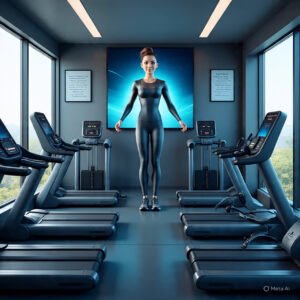AI Fitness Coaches

Educational overview — structured for policy compliance and readability.
Introduction
This article outlines how AI Fitness Coaches are reshaping personal training through motion analysis, metabolic feedback, and adaptive scheduling—organized in a review-friendly structure.
Hyper-Personalized Exercise Physiology
Reshaping body biomechanics through machine learning
Modern AI fitness coaches go beyond general advice. Systems rely on biomechanical predictive modeling to analyze an individual’s structure, muscle balance and movement patterns. Using 3D motion capture, they assess joint angles, muscle tension and balance at millisecond granularity. Neural networks refine workouts and forecast potential injuries weeks ahead, adjusting sessions to meet goals while improving body composition.
Real-Time Metabolic Intelligence
Monitoring and adjusting response in real time
Continuous metabolic monitoring via nano-sensor inputs and heart-rate variability allows algorithms to tune intensity, intervals and duration. The aim is to keep users in an optimal fat-burn zone and maximize post-exercise oxygen consumption (EPOC). After each session, adaptations are analyzed to update the next protocol.
Cultural Shift in the US and India
In the US, adoption emphasizes high-performance intensity and data-driven outcomes. In India, solutions blend holistic wellness and Ayurvedic concepts with modern exercise science, including body-type–aware programming and local-language guidance. Both markets show strong localization in language, diet and seasonality.
Optimized Time Management for Busy Professionals
AI coaches support smart time-block optimization by reading schedules, sleep and activity patterns. Micro-workouts—desk stretches and breathing drills—fit into workdays, while workload and mental-fatigue signals drive automatic intensity and modality adjustments.
The Future of Home AI Trainers
Upcoming systems will use multi-modal sensing with voice and gestures, possibly brain–computer interfaces. With home-IoT integration, they can orchestrate equipment, lighting and music, while family profiles let one coach personalize plans for everyone.
Sources & further reading
- WHO physical activity guidance (intensity zones & safety).
- Peer-reviewed literature on HRV-guided training, EPOC and injury-risk prediction.
Contact: you@example.com
Disclaimer: The information in this article is for educational purposes only and is not a substitute for professional medical advice, diagnosis, or treatment. Always consult a qualified clinician or certified trainer before starting any new exercise program. The authors and publishers assume no liability for any loss or injury resulting from use of this content.